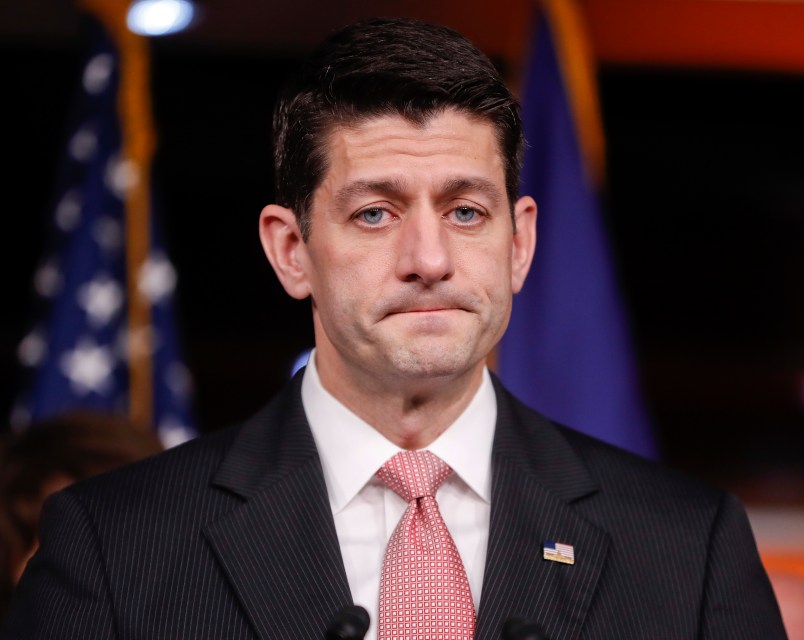A staffer with the House Appropriations Committee confirmed to TPM on Wednesday that they plan to use a short-term continuing resolution (CR) to fund the government past the end of September and avoid a potentially embarrassing and destructive government shutdown.
Despite House Speaker Paul Ryan’s repeated promises to return to so-called “regular order” in passing government spending bills, Congress has over his tenure so far continued to kick the can down the road without drafting and voting on a regular budget.
With government funding running out at the end of September, and the country hitting its debt limit a few days after that, Congress has almost no time when members return after Labor Day to go through the full appropriations process, which would have to include voting to lift the self-imposed sequester spending caps that have tied Congress’ hands for the past several years.
Bill Hoagland, a Republican who worked for decades for the Senate Budget Committee, said that after spending months on a failed effort to repeal the Affordable Care Act, Congress backed itself into a corner.
“Health care sucked up all the oxygen in the room and made it impossible not to be where we are today,” he told TPM. “Now the likely scenario is that they do a temporary CR, maybe for three or six months, at the same spending levels we have today, while they negotiate new spending caps. Then the appropriators can write a budget and move forward.”
Hoagland, now a senior vice president at the Bipartisan Policy Center, acknowledged that even with a looser timeline, Congress may struggle to come to an agreement.
“In order to not create a sequester, they really have to pass a law that changes those caps, he said. “Right now the law of the land says you can’t exceed $550 billion in defense and about $515 billion in non-defense spending. When we renegotiated these caps in 2015, it was a deal: going up on defense and non-defense, dollar for dollar. But doing that again will make conservatives mad because it’s adding to the deficit.”
Stan Collender, a former top staffer on the House and Senate Budget Committees who worked under both Republican and Democratic administrations, took an even darker view of the budget battles ahead.
“Are we ever going to have regular appropriations again? Not anytime soon,” he told TPM. “Partisanship is too high. The era when Republicans and Democrats worked together is long gone. There is going to always have to be an omnibus or CR or some kind of package.”
Collender added that while he believes Congress will pass a short-term CR in September, he is not confident that President Trump will sign it, especially after his speech in Phoenix where he openly called for a government shutdown if funding for a Mexican border wall is not included.
“The bigger question is whether Trump would veto,” he said. “Trump is such a wild card, and his war with Republican leaders seems to be so genuine that it’s entirely possible.”
Previous presidential administrations have had standoffs with Congress over the budget and debt limit, some of which resulted in government shutdowns. But when Presidents Ronald Reagan, Bill Clinton and Barack Obama butted heads over government spending, it was always with a Congress controlled by the opposing party.
“I have never seen a unified government, with the House, Senate and White House of the same party, in a situation like what we’re facing here this fall,” Hoagland told TPM.







ROFL
Riiiight. Because right in the middle of the mid-term election cycle, I’m sure the GOP wants to get into a fist-fight with the Freedumb Caucus morons to gut the budget.
Governing is hard when the entire foundation of your ideological castle is built on the quicksand tenet that the act of governing is inherently evil.
Excuse me, but this IS “regular order” under Ryan/McConnell…
“I want my wall! I want my wall! No wall No sign paper!”
So this is the new fall lineup. Fun with budgets.